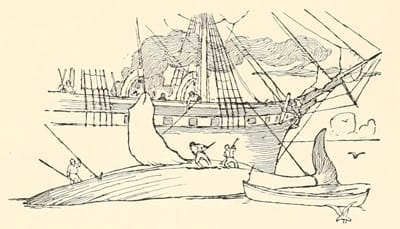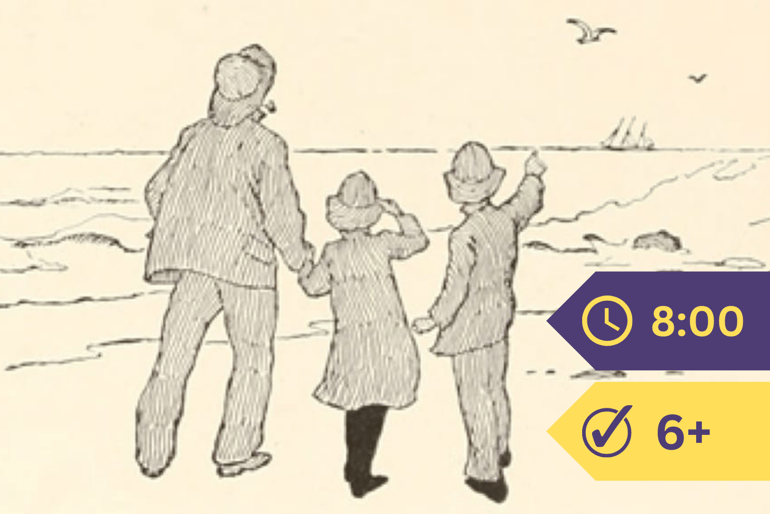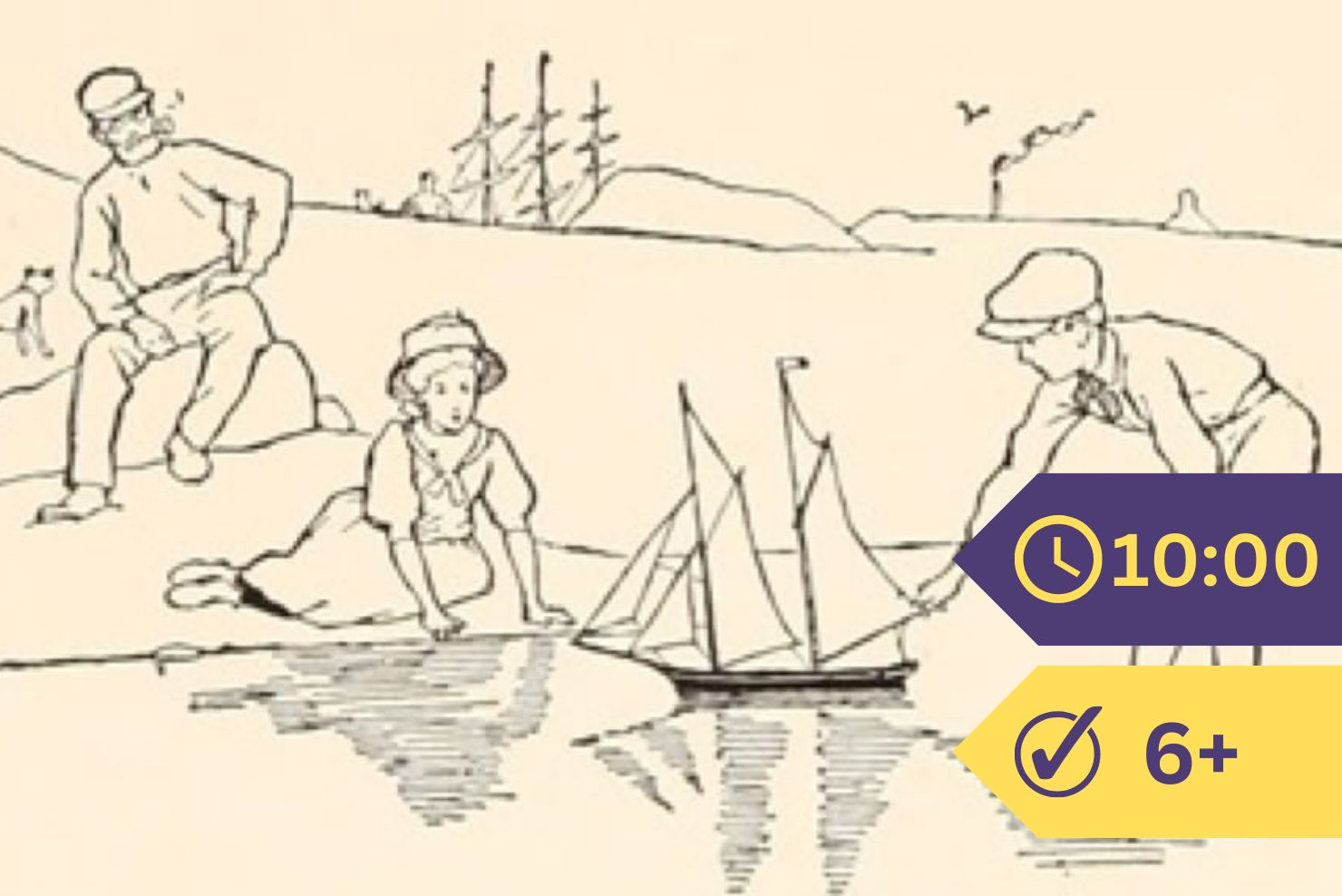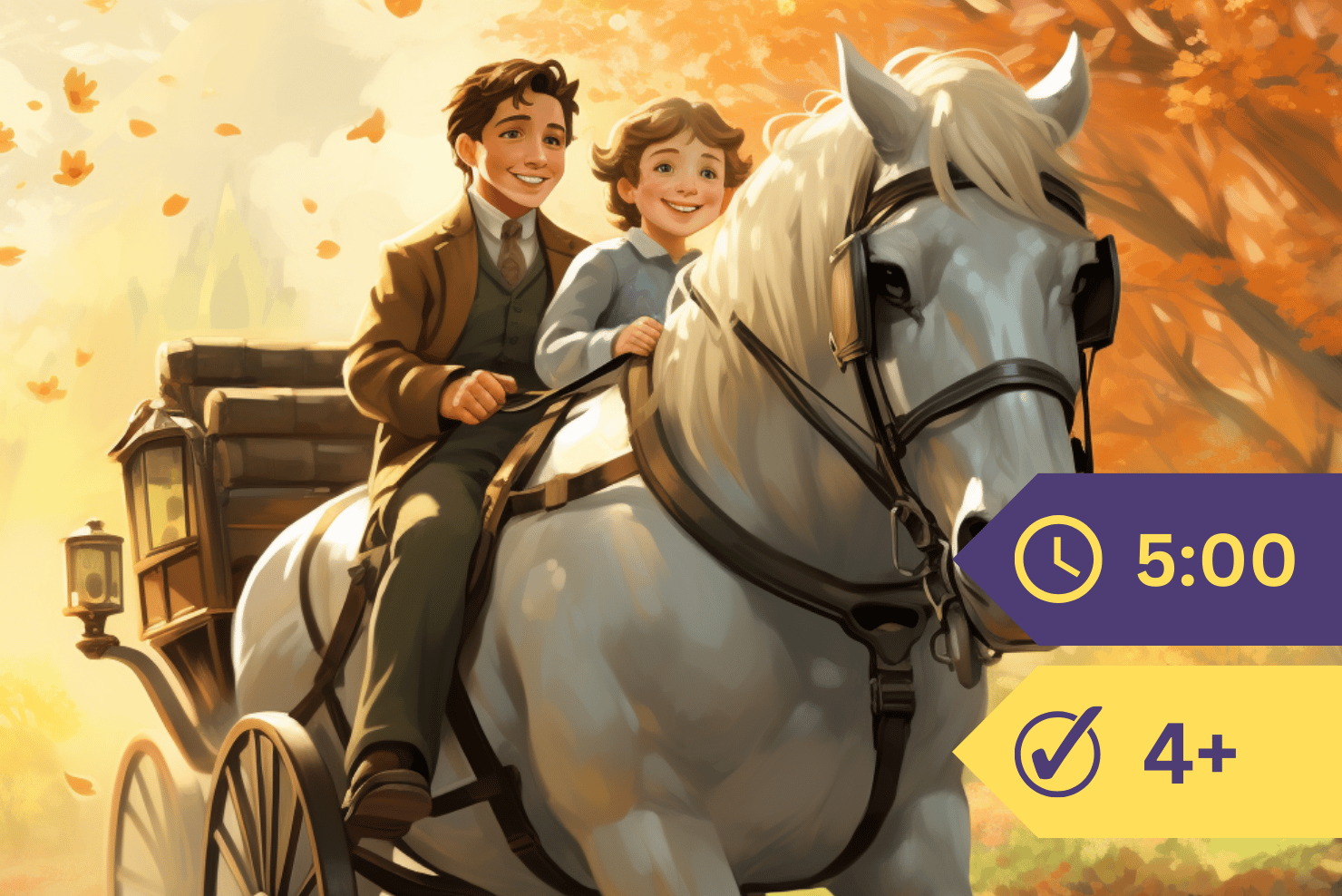For the children, the sea with its many changes was a completely new sight. One day, the sea was flat, calm, and shimmering like a large mirror. But with a breeze, the water could quickly change to different shades of blue. Another day, white foam and splashing water could be seen as the wind grew stronger.
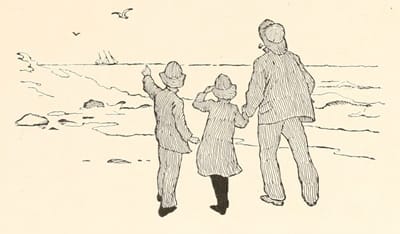
And the sea was so big! Captain Hawes assured them that it was even bigger than it looked. He also told them that if they were to go to the far edge of the sky, they would see another sea that was just as big, and it would take many, many days to cross to the other side of the sea.
When the wind blew high and the waves crashed against the rocks and the white mist rose, he took them to the beach to watch the storm and the surf rolling in. Of course, it was then time for rubber boots, rain hats, and raincoats, like the sailors wear in rough weather.
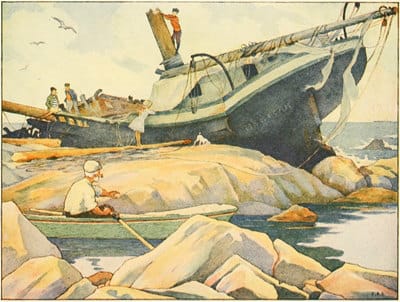
One day during a severe storm on the east coast, when they could barely stand upright because of the wind, they saw a sailboat wrecked on the rocks. Everyone on shore was greatly shocked. The rescue boat with its brave crew quickly set off to save the sailors who clung to the edge of the ship, waiting for help. They were all saved, but the ship was lost and smashed against the rocks.
So many sturdy ships met their end this way, said the Captain to the children. This was just what happened at sea. A few days later, when the storm had passed and the sea became calm again, Captain Hawes rowed with the children to the rocky point to see the wreck. Here lay the stranded ship firmly wedged between the rocks. Her masts were gone, she was broken into several pieces, and the tatters of the sails fluttered around. The good vessel had once sailed, but was now a worthless wreck.
And once the Captain had started his stories, he told them more long and exciting stories about his various travels and adventures, and about the whales he had seen.
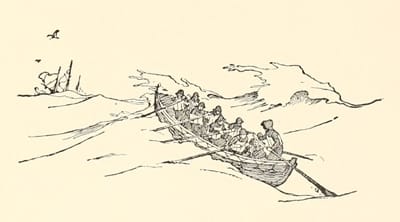
This life at sea endlessly fascinated the children and offered an inexhaustible amount of wonderful things to see and learn. One day, Captain Hawes said, “Now we will go to the dock and watch the riggers finish building the new ship that we launched.”
Of course, the children were eager to do so. Captain Hawes, who knew everyone and was welcome everywhere, took them on board and showed them everything, from the bow to the stern. And everything on the ship was so well made to measure that the children were constantly amazed. High above in the mast, men swarmed, performing dangerous stunts to secure the sails and ropes.
The children watched in awe.
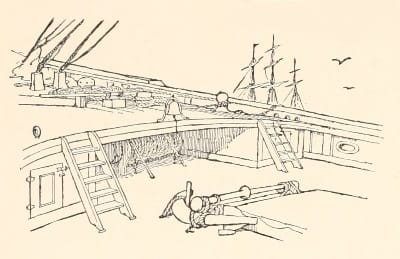
Outside on the yards, sailors were busy laying out the new sails, which were made in the sail loft, in the proper shape. The whole work seemed a miraculous tangle of lines and ropes and canvas that were all tangled up. Captain Hawes tried to explain what each rope meant and how it was used. But there were too many, and it was all very confusing. Each rope, he said, had its own name. Every sailor had to know the name of the rope precisely to do his work.
The riggers made small rope ladders from the railing to the crossbars of the ship by tying small thin lines to the heavy cords. Of course, these lines had to keep the large masts in place. The children were all amazed, but did not understand everything.
Bob was especially interested in this because he understood climbing, and this climbing was much, much higher than what the biggest boy in his school could do.
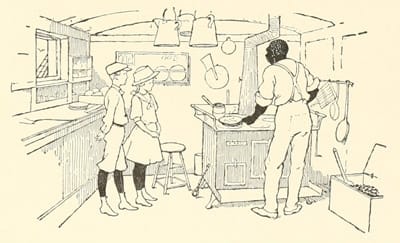
The cook showed them the galley and they thought it was great. The galley is the kitchen on a ship. It’s a small neat room, with handy shelves and cupboards where everything needed for cooking can be stored. Plates, dishes, pots, and pans. The stove was securely chained so there would be no danger of fire in a heavy storm.
For Betty, the galley was the most fun part of the ship. She immediately felt like cooking and thought it was a bit strange to see a sailor cooking.
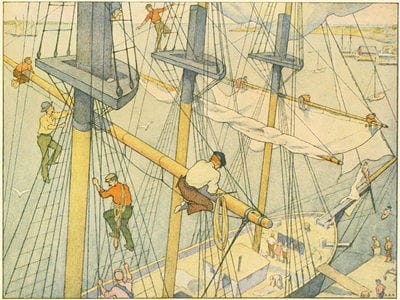
The city children never tired of Captain Hawes’ travel stories, and the Captain, with such good listeners, never tired of telling them. So they formed a perfect combination.
He told them how, as a young man, he went on whale hunts. “Of course, you know what whales are, they’re big sea creatures. You really couldn’t call them fish, they’re often as long as a house. These enormous beings live in the northern and southern seas. But once there was a whale that got lost. It ended up in a bay not far from here.” Now the children were really excited. “Oh, if only one would come this summer!” they exclaimed. The Captain said there was a chance, but they shouldn’t count on it.

When the ship reached the distant seas where whales could be found, “lookout sailors” were stationed atop the mast to watch for whales. When one was spotted, the lookout sailor would shout, “Look, the whale is spouting water.” Whales have the habit of spouting water when they come to the surface to breathe. Then the boats were lowered and the sailors went after the whale. They approached it and rowed as close as they dared. The harpooner standing at the bow of the boat then threw his harpoon into the side of the large animal.
The whale immediately caused a commotion, flapping its tail and slapping its fins against the water, and then dove deep down. The sailors would then pull on the rope attached to the harpoon as the whale went down. Sometimes they had to cut the rope to avoid being pulled underwater. But if this didn’t happen, the whale would resurface after a while and the boat would begin to be dragged along at a tremendous speed. Eventually, the whale would become tired and the boat would be rowed closer again and a harpoon would be stuck into its side until it was completely dead.
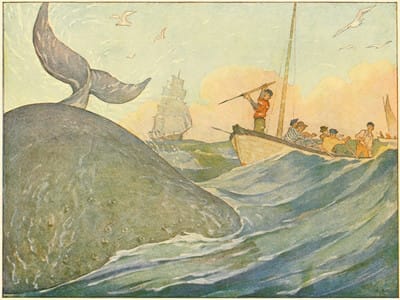
It was all exciting and dangerous work, because sometimes the whale attacked the boat and shattered it with a swipe of its tail, and the men, often badly injured, were thrown into the sea and sometimes drowned. The dead whale was towed back to the ship. If the ship was moored on shore, the body was cut into pieces. The large pieces of blubber were melted down in pots above the fire on deck. The oil ran into barrels and these were stored in the hold.
